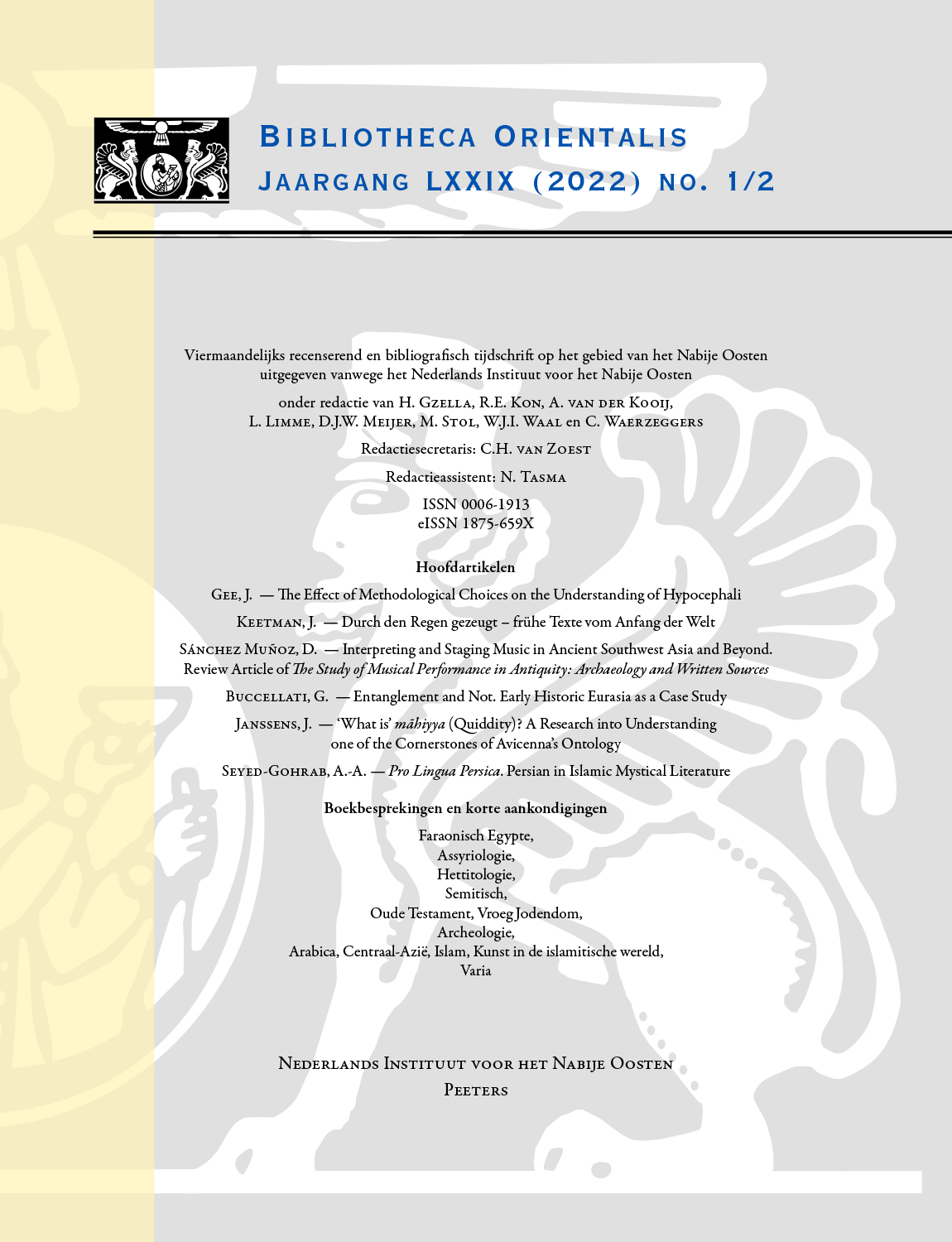 previous article in this issue previous article in this issue | next article in this issue  |

Preview first page |
Document Details : Title: Images for Learning and Teaching Activities in Egyptian Wisdom Literature and their Contact with Biblical Wisdom Author(s): SHUPAK, Nili Journal: Bibliotheca Orientalis Volume: 78 Issue: 1-2 Date: 2021 Pages: 57-79 DOI: 10.2143/BIOR.78.1.3289840 Abstract : One of the most prominent hallmarks of ancient wisdom literature — Egyptian and biblical alike — is its use of metaphors and similes. This device was designed not only to adorn the text but also to elucidate and illustrate the topic at hand by comparing it with an object or situation well known to the audience. Metaphors and similes found in biblical wisdom literature have been studied quite extensively. Much less attention has been paid to their usage in Egyptian wisdom texts, however. Addressing this fallow field of research, the present paper was prompted, inter alia, by the recent publication of The Book of Thoth — an Egyptian sapiential work replete with metaphors and similes. I focus herein on metaphors associated with the field of learning and instruction — a central theme of wisdom literature. Comparison with the biblical material helps sharpen and clarify the use of this device in the two corpora and answer questions such as: do the two cultures draw metaphors from the same realms of life? Are the affinities typological — i.e., general — or do they attest to contact or the influence of one culture upon the other? Were the imageries taken from a common cultural reservoir? Following a review of the relevant Egyptian, biblical, and extra-biblical textual sources, I analyze the Egyptian imagery relating to learning and instruction, then comparing it with the biblical and extra-biblical literature. The findings evince that both cultures relate to the same general fields — educational motives, the attributes of wisdom, the way in which it is acquired, and the learning process. They also draw imagery from the same realms of life — nature, everyday life, customs and beliefs. The disparity derives from the differences between the two cultures in these areas of life. The parallel images — education as animal-training, marital relations as the plowing of fields, water as a symbol of female sexuality, the learning process as consumption, and wisdom/instruction personified as a woman — are universal typologies. While possibly growing and developing independently in each culture, they may also be drawn from a common Near Eastern reservoir. |
|


